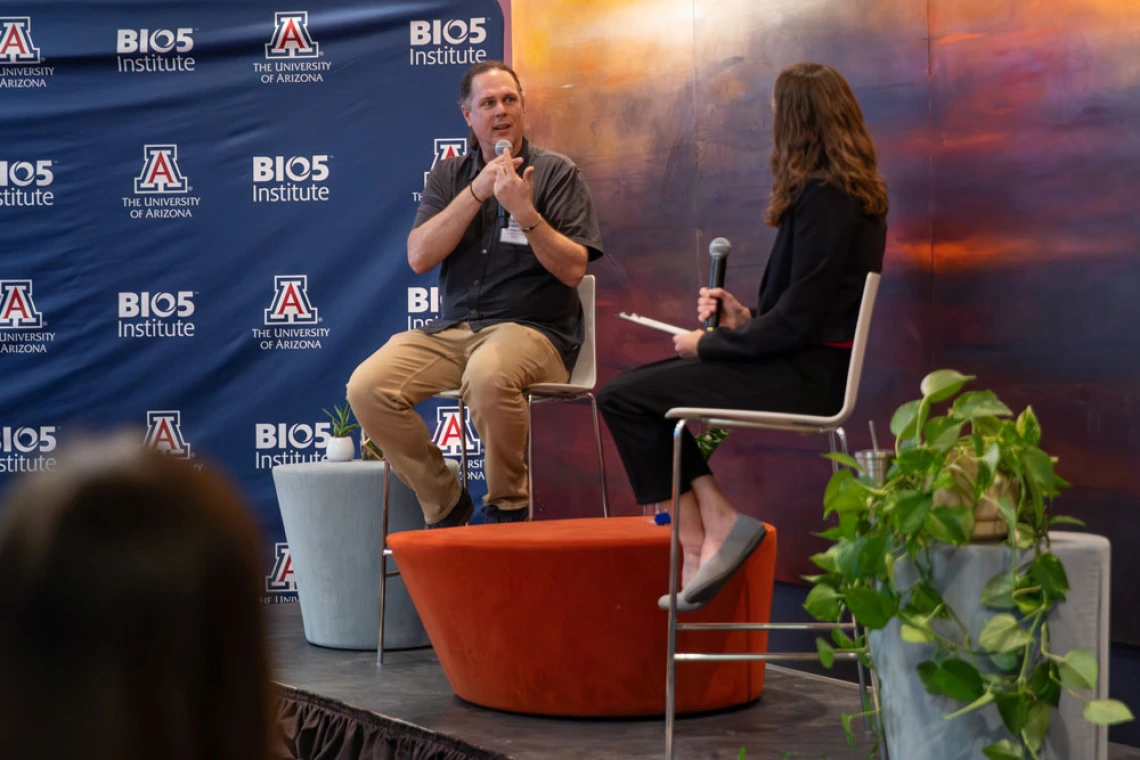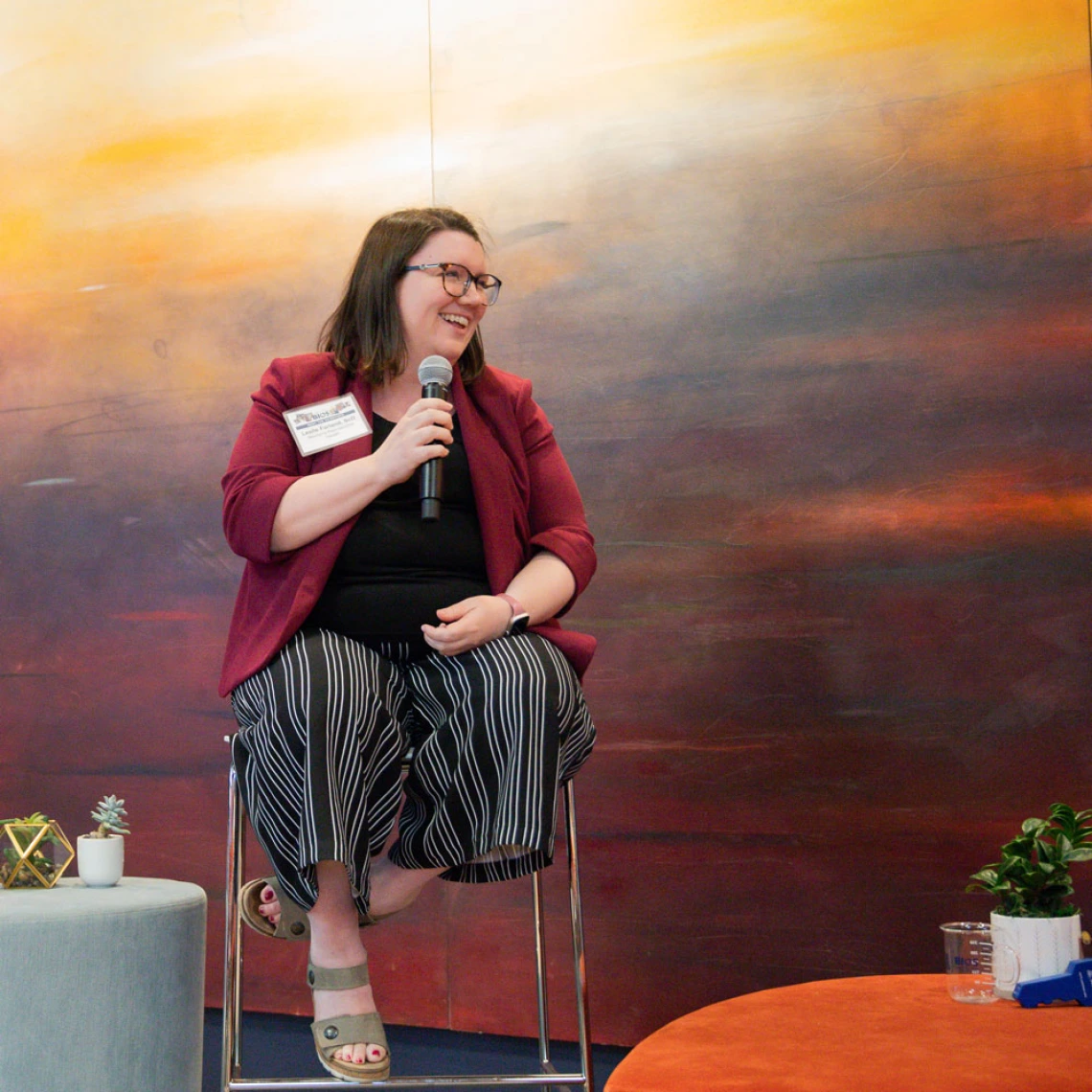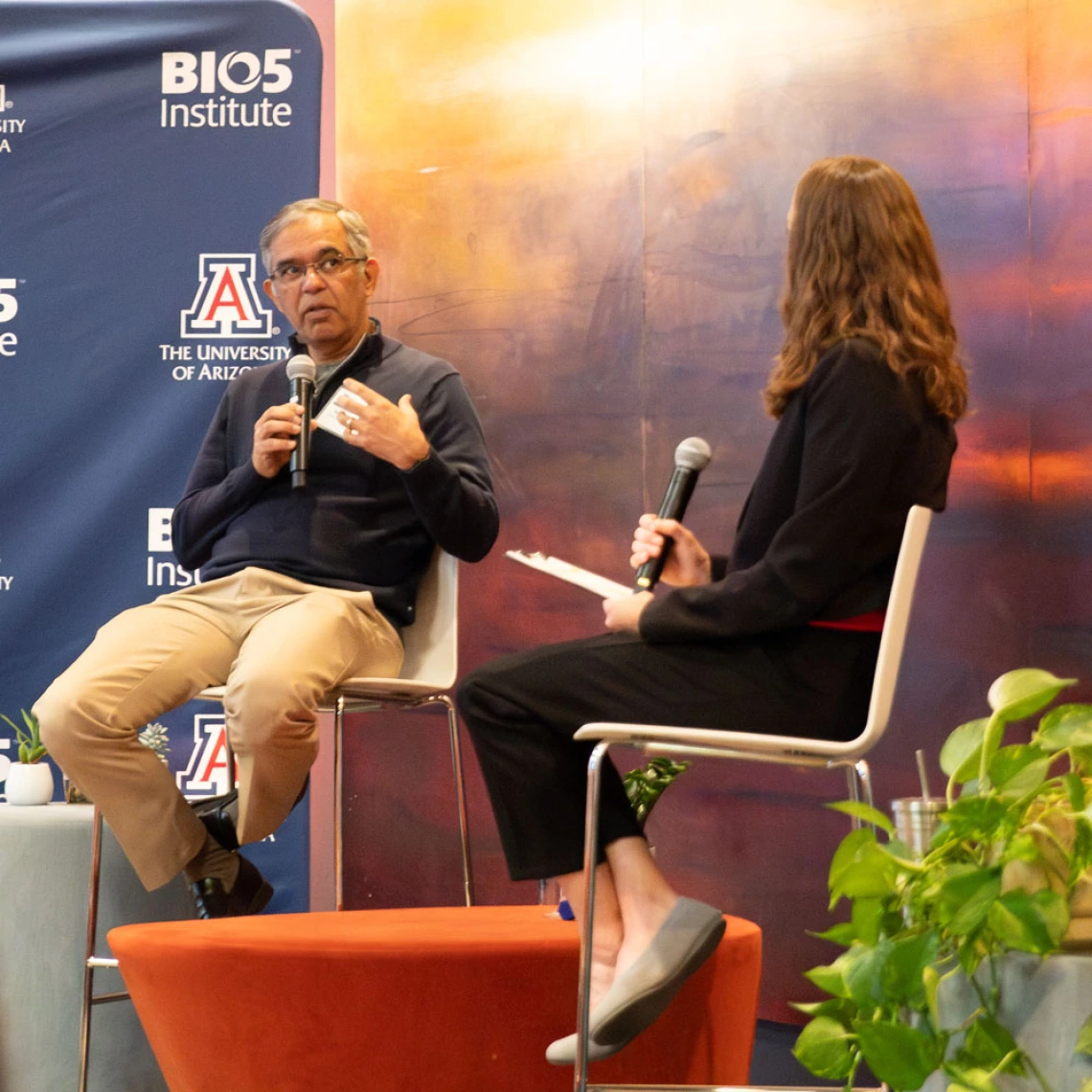Meet the scientists Behind BIO5
At an annual community event in early April, attendees heard from five accomplished University of Arizona researchers from diverse scientific disciplines during a series of intimate fireside chats. Read snapshots of these conversations.

Alexander Bucksch was one of five BIO5 members and University of Arizona faculty featured in fireside chats that explored the stories and collaborative science at the BIO5 Institute.
Lily Howe, BIO5 Institute
From the hidden world of plant roots, to the mysteries of the brain and the future of women’s health, the work of BIO5 Institute researchers spans a wide range of disciplines.
But at its core, it shares a common thread: tackling the world’s toughest problems through curiosity and collaboration.
On April 3, five University of Arizona researchers shared their scientific motivations, exciting findings, and the future of their work with dozens of members of the Arizona community as part of the annual Behind BIO5 event. These intimate conversations offer a behind-the-scenes look at the people, stories, and passions driving some of today’s most innovative scientific discoveries.
BIO5 members Alexander Bucksch, Leslie Farland, Nirav Merchant, Lee Ryan, and Judith Su, gave insights into the work they do and what led them into their field of research.





